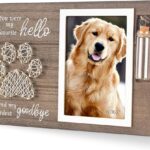I. The Importance of Preserving Classic Cars
II. How 3D Printing Revolutionizes Restoration
III. Real-Life Success Stories of 3D Printed Classic Car Parts
The Importance of Preserving Classic Cars
Classic cars aren’t just vehicles; they’re rolling pieces of history. **The importance of preserving these automotive treasures** goes far beyond their aesthetic appeal or the nostalgia they evoke. Here’s why maintaining and restoring classic cars is a worthy endeavor.
1. A Connection to the Past
Classic cars serve as a tangible link to our history. Each model tells a story, reflecting the era in which it was built. When you drive a classic car, you’re not just enjoying the ride; you’re experiencing a slice of the past. You can imagine the families that traveled in them, the adventures they had, and the memories they created. This connection to history adds immense value to these vehicles.
2. Cultural Heritage
Classic cars represent significant advancements in automotive engineering and design. They embody the cultural values and technological innovations of their times. By preserving these vehicles, we honor the craftsmanship and creativity that went into making them. It’s essential to recognize that these cars are not just machines; they are cultural artifacts that deserve to be celebrated and preserved for future generations.
3. Community and Camaraderie
The classic car community is vibrant and welcoming. Enthusiasts come together to share stories, attend car shows, and participate in restoration projects. Being part of this community fosters friendships and offers opportunities to learn from one another. Engaging in restoration and preservation activities helps build a sense of belonging, turning a passion into a shared journey.
4. Environmental Considerations
Let’s not overlook the environmental aspect! Restoring classic cars can be a more sustainable choice compared to mass-producing new vehicles. By keeping older cars on the road, we reduce the demand for new car production, which often has a hefty environmental footprint. Plus, many classic car enthusiasts are committed to making eco-friendly modifications, such as electric conversions, to reduce emissions while retaining the charm of their vintage rides.
5. Financial Investment
When done right, classic cars can be a sound financial investment. Certain models appreciate over time, turning a passion project into a wise monetary decision. By preserving and restoring a classic car, you can enhance its value and potentially reap the benefits down the line. It’s always a good idea to research market trends and focus on models that show promise for appreciation.
6. Personal Satisfaction
There’s a unique joy that comes from restoring a classic car. It’s not just about the end product; it’s about the process. The late nights spent in the garage, the challenges faced during restoration, and the eventual thrill of seeing your hard work come to life are incredibly rewarding. It’s a labor of love that builds character and instills a sense of accomplishment.
Conclusion
In summary, preserving classic cars is about much more than just preserving machines; it’s about maintaining our connection to history, celebrating cultural heritage, and fostering community. Whether you’re an avid collector or a casual admirer, acknowledging the value of these vehicles enriches our lives and ensures that future generations can enjoy the stories they tell. So, next time you see a classic car on the road, take a moment to appreciate the history and passion behind it!
How 3D Printing Revolutionizes Restoration
If you’ve ever dipped your toes into the world of classic cars, you know how passionate enthusiasts can be about preserving these timeless beauties. But let’s face it: restoring a classic vehicle can sometimes feel like a Herculean task, especially when it comes to sourcing those elusive replacement parts. Here’s where 3D printing steps in like a superhero, ready to save the day!
What is 3D Printing?
Before we dive into the nitty-gritty, let’s quickly cover what 3D printing actually is. Essentially, it’s a process where a digital file is turned into a physical object. Layer by layer, a printer builds up the material, whether it’s plastic, metal, or even resin, to create a part that can be used in your classic car. Imagine being able to whip up that hard-to-find part in your garage without having to scour the internet for days!
Cost-Effective Solutions
One of the biggest challenges in classic car restoration is the cost. Authentic parts can be astronomically priced, especially if they’re rare. But with 3D printing, you often have the option to create replicas for a fraction of the cost. Here’s how:
- Design it Yourself: If you’re tech-savvy, you can design parts yourself using CAD software.
- Access to Open Source Files: Many classic car enthusiasts share their designs online, allowing you to download and print parts without any design work.
- Local Printing Services: Not everyone has a 3D printer at home, but local businesses often provide this service for a reasonable fee.
Customization at Your Fingertips
Another fantastic aspect of 3D printing is the ability to customize parts. Need a replacement gauge housing that matches the original but has modern enhancements? No problem! With 3D printing, you can tailor the design to meet your needs while still paying homage to the original look. This level of customization is a game-changer for classic car restorers.
Durability and Material Options
You might wonder about the durability of 3D printed parts. Well, the technology has come a long way, and today’s materials can be incredibly robust. For example:
- ABS Plastic: Known for its strength and flexibility, ideal for non-structural parts.
- Carbon Fiber Composites: Lightweight and extremely durable, perfect for performance upgrades.
- Metal Printing: Some printers can now produce metal parts that are as strong as traditionally manufactured ones.
The Future of Restoration
As 3D printing technology advances, it’s only going to become more integral to classic car restoration. Imagine a future where you can scan your original parts to create perfect replicas, or even collaborate with designers worldwide to produce custom pieces that enhance your vehicle’s performance and aesthetics.
So, whether you’re a seasoned restorer or a newbie, embracing 3D printing could revolutionize your classic car restoration project. Not only does it save time and money, but it also opens up a world of possibilities. Ready to get started? Fire up that printer and let your creativity take the wheel!
Real-Life Success Stories of 3D Printed Classic Car Parts
When it comes to classic cars, enthusiasts know the thrill of restoring a vintage beauty to its former glory. However, finding original parts can sometimes feel like searching for a needle in a haystack. Fortunately, 3D printing has entered the chat, and the results are nothing short of miraculous! Let’s dive into some remarkable success stories that showcase the transformative power of 3D printing in classic car restoration.
1. The Iconic Volkswagen Beetle
One of the most beloved classic cars, the Volkswagen Beetle, has seen incredible success with 3D printing. A restoration enthusiast named David had a 1967 Beetle that needed a new dashboard trim piece. After scouring local junkyards and online marketplaces with no luck, he turned to 3D printing. By scanning the original piece and uploading it to a 3D printing service, he received a perfect replica in just a few days!
Not only did this save him time and money, but it also helped him maintain the integrity of his vehicle while keeping it as close to original as possible. The thrill of seeing that freshly printed part fit seamlessly into his Beetle was an unforgettable moment!
2. Restoring a Ford Mustang
Another inspiring story comes from a dedicated Ford Mustang lover named Lisa. She was working on a 1965 Mustang Fastback, and the headlight bezels were long gone. After exhausting all traditional avenues, she decided to explore 3D printing. Lisa found a community of Ford enthusiasts online who had already designed a 3D model for these specific bezels.
With a quick download and a few adjustments, she sent the model to a local 3D printer. Within days, she had stunning new bezels that fit perfectly and looked just like the originals! Lisa couldn’t contain her excitement, as these bezels not only enhanced the appearance of her Mustang but also restored its functionality. All thanks to the wonders of modern technology!
3. The Classic Chevrolet Corvette
Then there’s the story of Tom, who embarked on a mission to restore a 1971 Chevrolet Corvette. This classic car was a family heirloom that had seen better days, and Tom was determined to bring it back to life. One particular part that eluded him was the door handle—originals were either too damaged or priced astronomically.
Tom reached out to a 3D printing service, uploaded images of the handle, and within a week, he had a custom 3D-printed replacement. The best part? The quality was exceptional, and the handle blended in flawlessly with the rest of the car’s design. Tom was not only able to honor his family’s legacy but also learned the ins and outs of 3D printing in the process!
Why These Stories Matter
These success stories illustrate that 3D printing isn’t just a trend; it’s a game-changer for classic car restoration. Here’s why it matters:
- Accessibility: Hard-to-find parts can be recreated with relative ease.
- Affordability: 3D-printed parts often come at a fraction of the cost of originals.
- Customization: Enthusiasts can tweak designs to fit their unique vision.
As these stories show, 3D printing is unlocking new possibilities for classic car aficionados everywhere. Whether you’re a seasoned restorer or just getting started, the world of 3D printing is waiting to help you embark on your next restoration adventure!










Comments